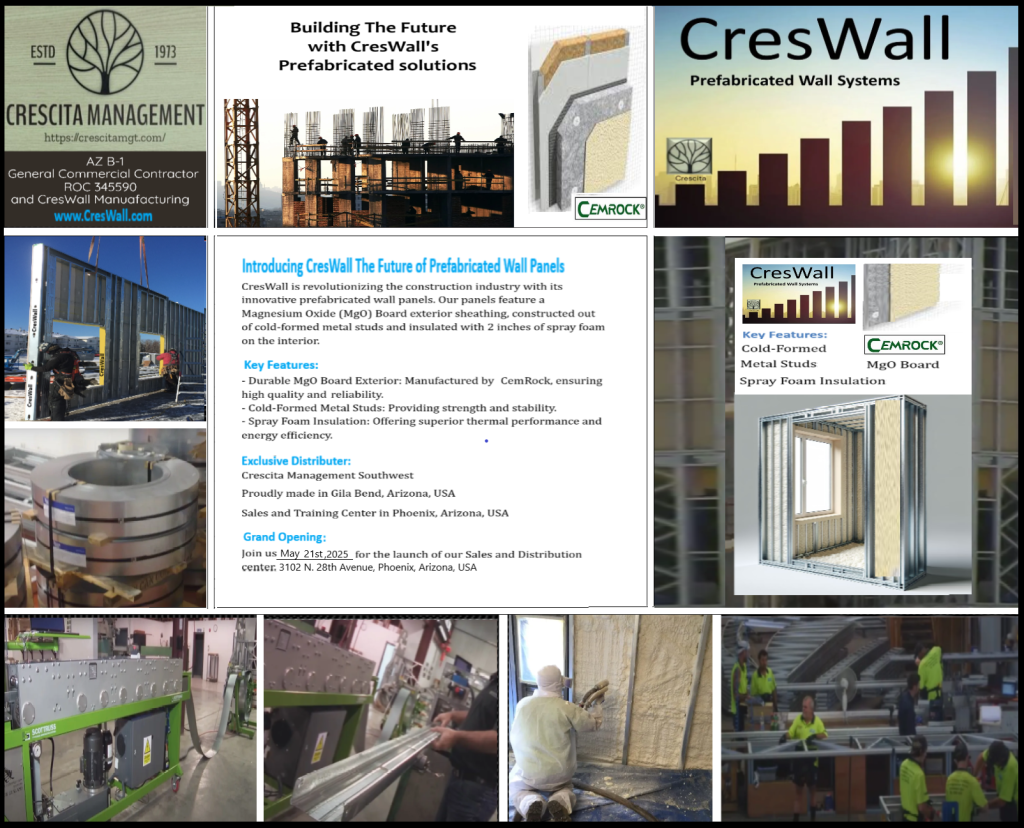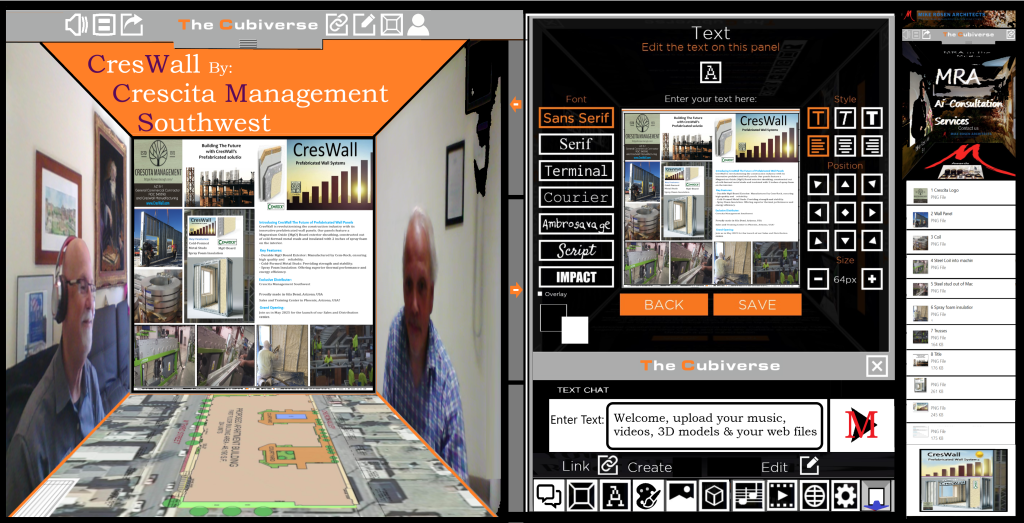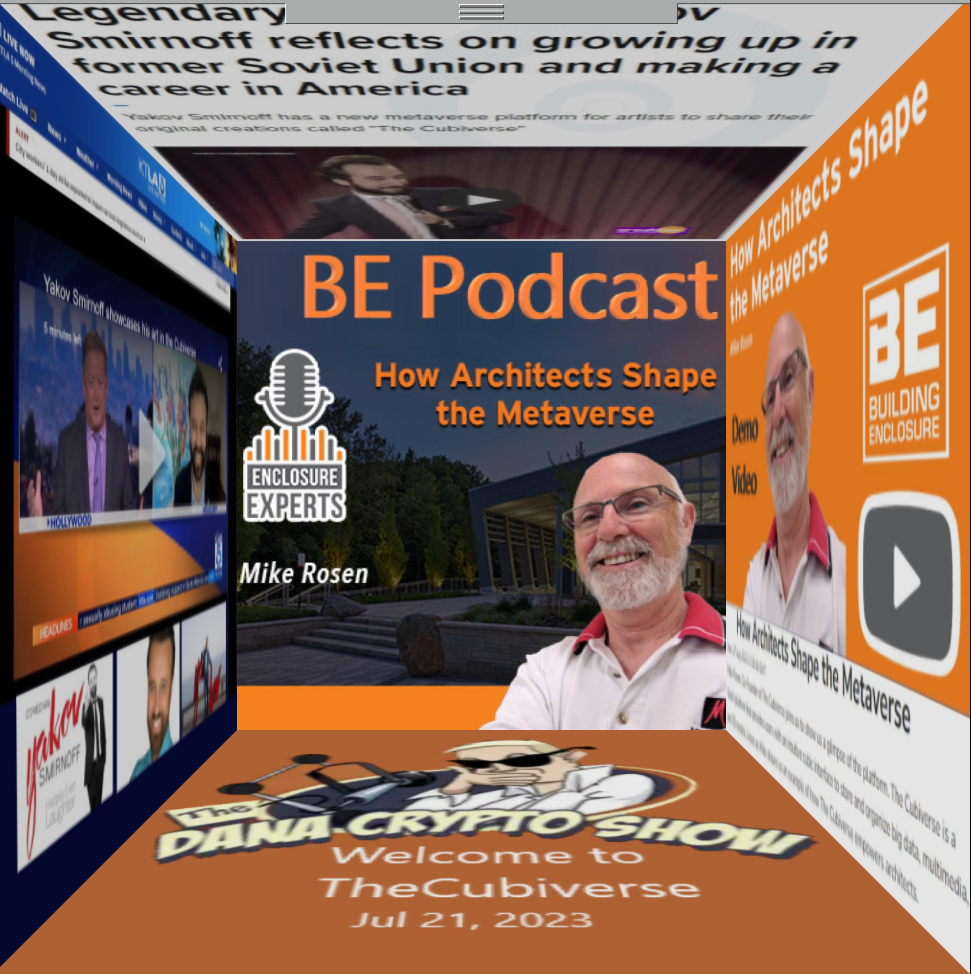



After integrating several Ai models and training several Ai- AGENTS to automate MRA processes developed over 40 years of being a systems thinker, Mike Rosen is proud to announce that he is offering Ai consulting services to help MRA clients and partners to supercharge their work flows using Ai.
Please check back here for additional updates as they become available.



The MRA Ai-Studio APP1 integrated into the CubiVerse with a custom CubicDashBoard Interface
Contact us today to learn how MRA Ai-Studio can streamline your workflow and enhance your project presentations.
TheCubiverse and the future of the Metaverse.
By Mike Rosen AIA

At its core, the metaverse is a collective digital space maintained by an intricate network of computers. Accessible through devices ranging from computers to VR headsets, this immersive realm allows users to traverse digital landscapes in entirely new ways. Conversations become multi-dimensional dialogues, games turn into interactive narratives, and concerts metamorphose into shared experiences across physical boundaries. In its simplest form, the Metaverse is the next-generation 3D internet.
TheCubiverse emerges as a pioneering platform, not only ushering us into the metaverse but equipping us to craft and distribute 3D models, videos, and digital assets in novel formats. While it hasn’t yet achieved full immersion, TheCubiverse empowers the creation of interactive learning modules, delivers computational muscle, and erects virtual spaces for exhibitions, retail, and trade shows.
This synergy between the metaverse and TheCubiverse augments their combined potential. The metaverse serves as the arena for seamless interaction and digital experiences, while TheCubiverse offers a platform for content creation and distribution. These dual thrust transforms collaboration and connectivity, opening vistas for cross-domain innovation.
Under the hood, TheCubiverse’s prowess is particularly evident in its capacity to interact with virtual counterparts of real-world entities and systems. These digital twins simulate the real-world, spotlight potential glitches, and offer avenues for refinement. Imagine engineering a digital twin of a building, subjecting it to various loads to gauge structural integrity—TheCubiverse will empower such analysis and experimentation.
One of TheCubiverse’s intriguing feats is the introduction of QBicodes, a novel linkage between the tangible and virtual realms. Scanning a QBicode in the physical world transports you to a corresponding digital experience within TheCubiverse. A museum, for instance, can affix QBicodes, providing visitors with augmented tours and immersive insights into artworks.
The Cubiverse takes commerce into the metaverse with its virtual CubeStores. These virtual retail arenas enable cross-retailer shopping, where users can explore products, compare prices, and make purchases with a secure always there wallet—all within an immersive digital environment.
The Cubiverse catalyzes a seismic shift in our interaction with the metaverse. Its technology democratizes complex digital content, rendering it cost-effective and accessible to a wider audience and transforming education, arts, trade, and entertainment.
What Lies Ahead for TheCubiverse?
While still in its infancy, TheCubiverse teems with the potential to redefine how we interact with our digital world. Envision a collaborative virtual workspace in which remote teams immerse themselves, coalesce during meetings, and even deliver presentations in an entirely virtual setting.
Education stands to gain from this metamorphosis. The metaverse can revolutionize learning with immersive historical tours, hands-on experiments, and global student collaborations, all orchestrated through platforms like TheCubiverse.
Entertainment in the metaverse spawns novel avenues, from gaming to digital concerts, reinventing how we unwind and connect with peers and loved ones.
As technology continues to propel us forward, the metaverse unfolds its horizons, with TheCubiverse as an avant-garde herald. The fusion of these two forces promises a future where the metaverse is no longer a concept but a tangible, immersive reality easily accessible to all.
Title: Architects in the Metaverse: Redefining Digital Content and Engagement

Introduction:
As the metaverse becomes a tangible reality, building architects are emerging as the visionary designers who shape the landscapes of this immersive digital realm. With their expertise, they can create visually stunning and interactive environments that revolutionize the way we interact with virtual content. Mike Rosen AIA, LEED AP ND, a leading innovator and 30-year pioneer in advanced visualization technology, shares his insights on the pivotal role of architects in the metaverse and the transformative potential it holds.
The Metaverse’s Architectural Evolution:
In the physical world, architects have long been revered for their ability to blend functionality and aesthetics. In the metaverse, most worlds have been conceived and built by game designers with no real-world architectural design experience. Real professional architects are trained in the art of creating dynamic and interactive spaces. Beyond traditional structures, these architects craft environments that engage users in unprecedented ways, transcending the limitations of the physical realm, and uplifting their spirit.
Mike Rosen explains, “Building architects in the metaverse are pioneers, transforming their expertise into digital landscapes that captivate and inspire users, without the limitations of the physical world, such as gravity, cost of material, or mechanical systems. If you want to design a building out of pure gold with diamond and platinum detailing, real-world restrictions do not apply. If the toilet does not really flush no one minds, and structural engineers or sky hooks are not required to hold up the buildings”
Designing Immersive Experiences:
The metaverse thrives on user engagement, and architects play a crucial role in designing environments that immerse and captivate. Their mastery of spatial design, lighting, and texture creates visually stunning realms that draw users into unforgettable experiences. The challenge has been the complexity and cost associated with designing in, and for, the metaverse. As the creation tools improved, it is no longer difficult for a white-haired architect or novice designer to upload their content into the metaverse.
“At Cubic Dashboard LLC, we empower architects and other creatives, high-tech pros, and kids, with our revolutionary platform, The Cubiverse, enabling them to simply create immersive and visually captivating cubic environments,” says Mike Rosen. “Through thoughtful design and attention to detail, architects can transport users to dimensions where they can explore, connect, and collaborate like never before.”
At his architectural firm based in Apex, North Carolina, Mike uses The Cubiverse to present projects to clients, municipal boards, and investor groups that cannot travel or be present for formal presentations. These types of Collaborative Virtual Environments (CVE) have been used for years, but previously required head-mounted displays, AR glasses, and very expensive systems. Today the price points of computers, software, and technically competent programmers have dropped to a point that a large portion of the creator economy has turned its focus to the metaverse. With the Cubiverse platform, no peripheral devices are needed, the flat computer screen, smartphone, or tablet transforms into a 3-dimensional interface.
Fostering Collaboration and Social Interaction:
Collaboration and social interaction are the lifeblood of the metaverse, and architects facilitate these connections through their designs and spatial planning. From virtual offices to entertainment venues, architects will create spaces that encourage seamless communication and engagement, enabling users to come together, share ideas, and form communities.
Architect Mike Rosen AIA, LEED AP ND, emphasizes, “Beyond a gateway product, The Cubiverse represents our vision for the near future of consumer engagement with the metaverse. With community creativity and support, we can revolutionize the way people interact with what the metaverse will become.”
Revolutionizing Content:
The metaverse serves as an expansive canvas for innovation, and architects are leading the charge in redefining how we experience digital content. Their designs will shape the metaverse into a visually captivating landscape, empowering users to explore, learn, create, and connect in unprecedented ways.
“As architects, our role extends beyond constructing virtual structures. We define the very essence of this digital realm, ushering in a new era of engagement and experiences that will reshape how we interact with the content,“ remarks Mike Rosen.
Conclusion:
Building architects are at the forefront of the metaverse revolution, crafting immersive and engaging visually pleasing spaces that redefine the way we interact with our content and this new frontier. With their visionary designs, they push boundaries and can bring the metaverse to life, creating dynamic environments where users can explore, learn, experiment, collaborate, and form connections. As we embrace this transformative era, architects’ design contributions, unique training, and frame of reference will continue to shape the metaverse and redefine our digital experiences.